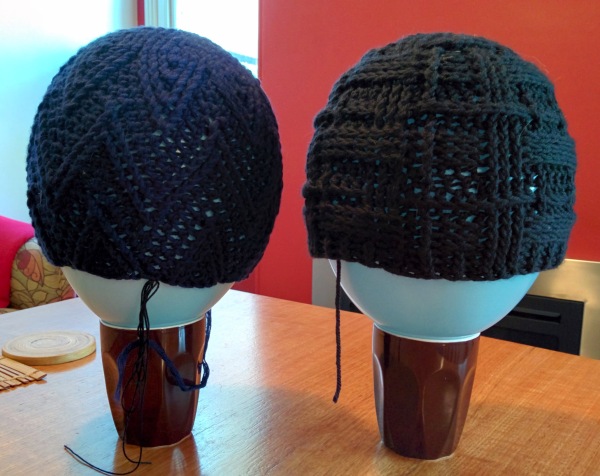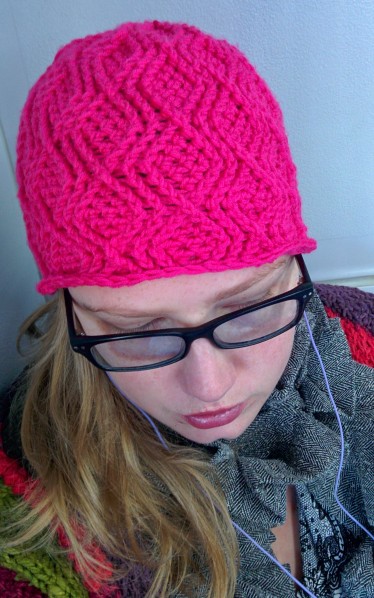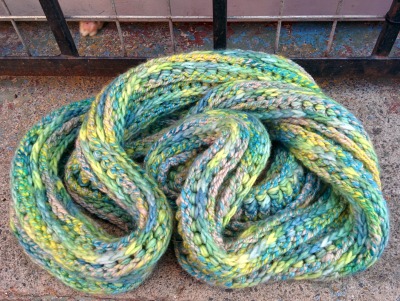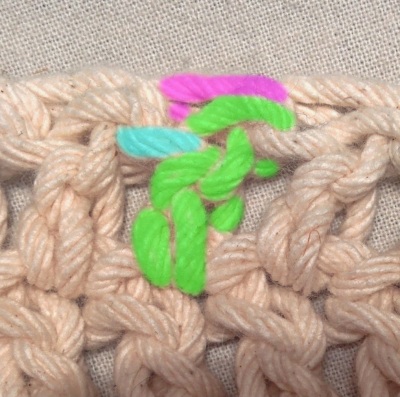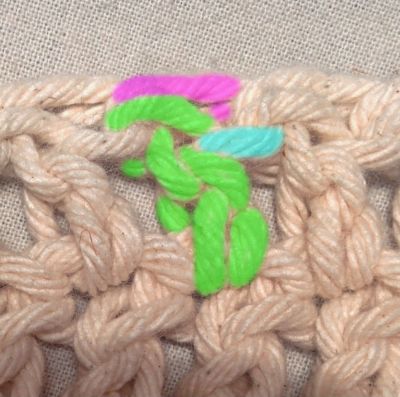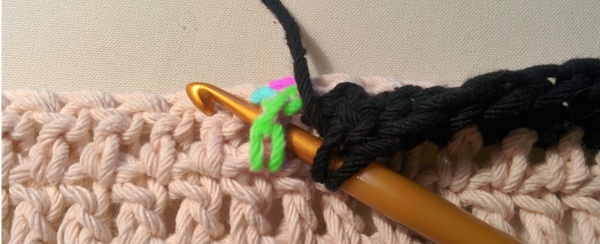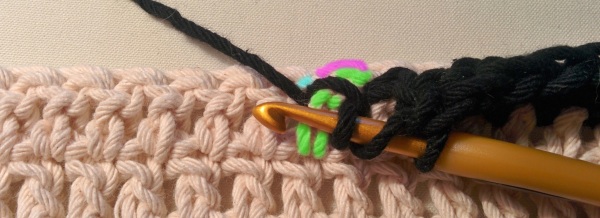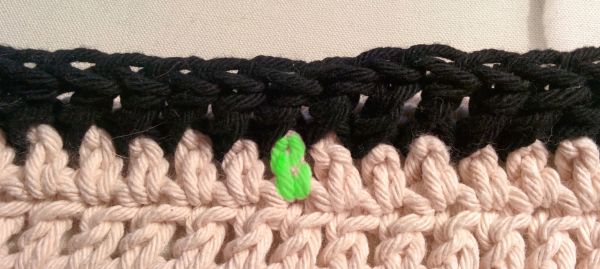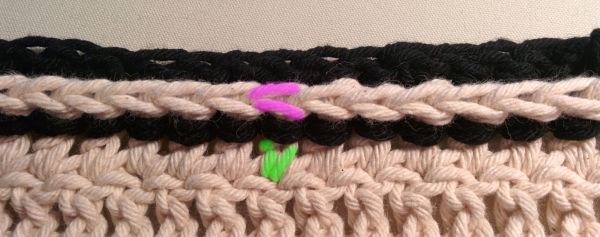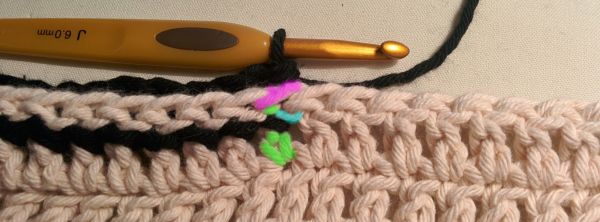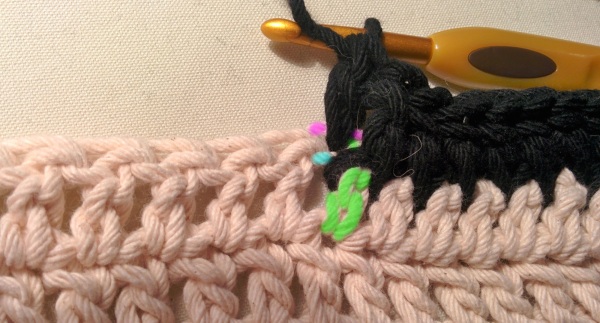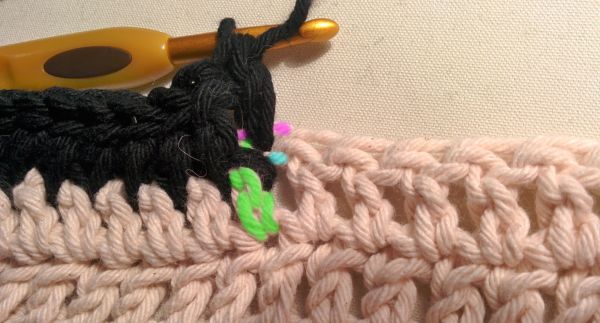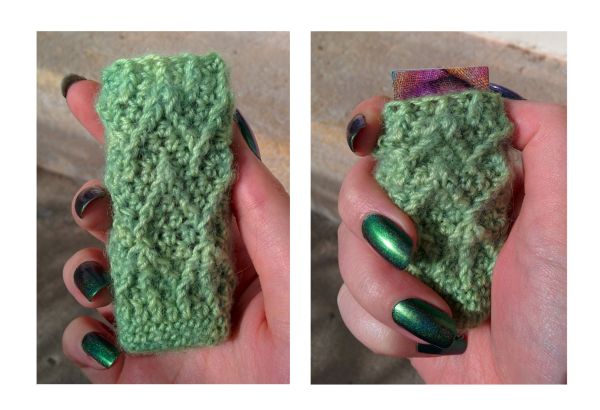You might think that I’d get over hats, but if that’s the case, it hasn’t happened yet. I have two hats today, one made for my friend James, Flick’s partner, and one for my boyfriends father.
Here they are unblocked. They both made from patterns by Aaron Matthew Asmussen. The black beanie, for my boyfriends father is from the Open Weave pattern. And the blue beanie for James from the Zig (aka Charlie Brown) pattern.
The first hat I made from Aaron’s patterns used the Open Weave pattern, this one was for my boyfriend, it’s interesting going back to the pattern now that I have much more experience with these cable hats. The Open Weave remains the most complicated of Aaron’s patterns that I’ve tried. I think it’s because his other pattern use only front-post and normal stitches, where as Open weave also uses back-post stitches as well. And the number of pattern repeats changes between rounds, which adds another level of complication. As with any pattern like this, it’s a matter of following the pattern carefully and having patience, particularly with the changing repeats, because it’s easy to make incorrect assumptions about rounds.
Here are the two hats, blocking over balloons, which have been blown to the circumference of a larger man’s head. You might remember that when I blocked Flick’s hat this way, I ended up having to rip back the last round, because the brim was still curling up. This is because front-post stitches tend to curl outward, and the balloon curves inwards, so while the rest of the hat is blocked nicely the brim needs a bit more attention.
To address this problem, I took some yarn (actually crochet cotton) and threaded it through the last round, so that I could pull it in to the base of the balloon. I made sure that the round was sitting flat, without any curl. Since the balloon is narrower at the bottom, I obviously wasn’t introducing any stretch in the brim, but I wasn’t worried about that, I just wanted to straighten it out, in fact a snug brim is nice, it will stretch to the prefect size with wear.
(I didn’t have to worry about this with the black hat, because I ended it with a few rounds of alternating front-post and back-post stitches. Front-post stitches curl out, back-post stitches curl in, so the brim ended up straight :) )
Here’s the blue hat, ready to go to it’s new home. But the way, I used Morris empire, worsted weight (10-ply) for this hat, and a 5.5 mm hook, half a size bigger than the pattern suggests to make the hat a bit bigger.
And the black hat, this one from Grignasco Loden, again with the 5.5 mm hook
But shhh, don’t tell, they’re both surprises :)

